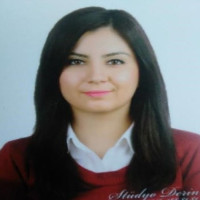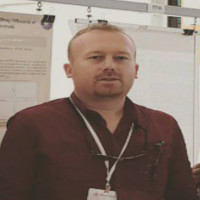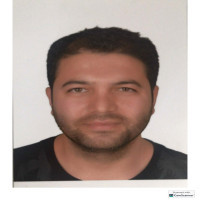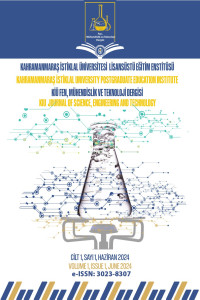Araştırma Makalesi
Sayı Hakemleri












Amaç ve Kapsam
Kahramanmaraş İstiklal Üniversitesi Fen, Mühendislik ve Teknoloji Dergisi, temel bilimler ve mühendisliğin tüm konularını kapsayan multidisipliner bir dergidir. Temel ve mühendislik bilimlerindeki güncel bilimsel/teknik gelişmeleri ilgili bilim insanlarına ve okuyucularına ulaştırmayı hedefler. Dergimiz, temel bilimler ve mühendisliğin hem deneysel hem de kuramsal çalışmalarını kendisine konu edinir.
Temel bilimler, iç mimarlık, mimarlık, teknoloji ve mühendislik alanlarında araştırma makaleleri, incelemeler, teknik notlar, derleme ve bilimsel yayın mektuplarını kabul eden bilimsel bir dergidir.
Yazım Kuralları
Yazım Kuralları ve Biçimsel Özellikler
DergiPark' tan makale gönderme aşamasında sisteme yüklenecek dosyalar;
1. Yayın şablonuna uygun, yazar, kurum, e-mail bilgisi bulunmayan tam metin dosya (Kör hakemlik için). Makale yazım kurallarına uygun hazırlanmış şablonu indirmek için Tıklayınız.
2. Tüm yazarlarca imzalanmış, elle doldurulmuş telif hakkı devir formu dosyası indirmek için Tıklayınız.
3. Tüm yazarlarca imzalanmış, elle doldurulmuş makale basım istek dilekçesi indirmek için Tıklayınız.
4. Benzerlik raporu*
Gönderilen makalelerin tümü intihal belirleme yazılımı kullanılarak sorumlu yazar tarafından yüklenmelidir. Ayrıca benzerlik raporu dergi tarafından kontrol edilmekte olup, editör kurulu tarafından makalenin hakem değerlendirmesine gönderilmesine veya doğrudan ret edilmesine karar verilmektedir. Makalelerin benzerlik oranı %20 yi geçmemelidir.
Yazım Kuralları
Etik İlkeler ve Yayın Politikası
YAYIN ETİĞİ İLKELERİ
KİÜ Fen, Mühendislik ve Teknoloji Dergisi’ne gönderilen bilimsel yazılarda, Yükseköğretim Kurumları Bilimsel Araştırma ve Yayın Etiği yönergesi ve COPE (Committee on Publication Ethics)’un Editör ve Yazarlar için belirlediği esaslar dikkate alınmalıdır.
Yazarların görevleri
Orijinal araştırma makalesinin yazarları, yapılan çalışmanın önemini sunmalıdır. Temel veriler makalede doğru şekilde gösterilmelidir. Makale, başkalarının çalışmayı çoğaltmasına izin vermek için yeterli ayrıntı ve referansları içermelidir. Sahtekarlık veya bilerek yanlış ifadeler, etik olmayan davranışlar oluşturur ve kabul edilemez.
Yazarlardan çalışmalarının ham verilerini editör incelemesi için makale ile birlikte sağlamaları istenebilir ve uygulanabilirse verilerin herkese açık olması için hazırlanmaları gerekir.
Yazarlar yalnızca tamamen orijinal eserler sunacak ve başka çalışmalardan uygun şekilde alıntı yapacaklardır. Makalenin niteliğini belirlemede etkili olan yayınlara da değinilmelidir.
Genel olarak, aynı araştırmayı tanımlayan makaleler birden fazla dergide yayınlanmamalıdır. Aynı makaleyi birden fazla dergiye göndermek etik olmayan yayıncılık davranışını teşkil eder ve kabul edilemez. Başka bir yerde telif hakkıyla korunan materyal olarak yayınlanmış makaleler gönderilemez.
Önemli katkılarda bulunan herkes ortak yazar olarak listelenmelidir. İlgili yazar, katkıda bulunan tüm ortak yazarların bulunmasını ve yazar listesine hiç katılmamış kişilerin eklenmemesini sağlar. İlgili yazar aynı zamanda tüm ortak yazarların makalenin son halini onayladığını ve yayın için sunulmasını kabul ettiğini doğrular.
Yazar yayınlanmış eserinde önemli bir hata veya yanlışlık olduğunu keşfettiğinde, dergi editörünü veya yayıncısını derhal haberdar etmek ve makaleyi geri çekmek veya düzeltmek için editörle işbirliği yapmak yükümlülüğündedir.
Yazarların Sorumlulukları
Gönderim sürecinden önce ve / veya gönderim sürecinde yazar (lar);
Gönderilen tüm araştırmanın orijinal, tam referanslı ve tüm yazarların doğru bir şekilde temsil edildiğinden emin olunuz. Gönderme özel olmalı ve başka bir yerde değerlendirilmemelidir.
Yayıncının ve editörün, makalenin yazarlığından ve makalenin ahlaki durumu ve orijinalliği ile ilgili tüm iletişimlerden tamamen sorumlu olduğu kabul edilen belirlenmiş bir yazar için doğru iletişim bilgilerini sağlayınız.
Yazarlar tarafından daha önce yayınlanmamış olan çalışmaları da dahil olmak üzere, tüm verilerin ve üçüncü şahıs materyallerinin kaynağını veriniz. Sunumun orijinalliğini tehlikeye atabilecek herhangi bir unsur, ilk etapta editör ofisi ile açıkça önlenmeli ve / veya tartışılmalıdır.
Makalelerinde yer almayı düşündükleri herhangi bir üçüncü kişinin makaleye katkısını tanımlayın ve her bir durumda yeniden kullanım için ilgili telif hakkı sahiplerinden yazılı izin alın. Bu izinler, makale kabul edildiğinde veya küçük değişikliklerin kabul edilmesini gerektirdiğinde gönderilmelidir.
Gönderim sürecinde şeffaflık, verimlilik ve yayıncıdan ve editörden saygı bekleyiniz. Hem yayıncı hem de editör ile iyi iletişimde kalınız.
Etik olmayan, yanıltıcı veya zararlı olduğu tespit edilen makalelerin geri çekilmesiyle birlikte, hatalı yayınlanması durumunda işbirliği yapınız. Editör (ler), yayıncı ve diğer yazarlarla iyi iletişim halinde kalınız. Ayrıca aşağıda belirtilen ilkeleri de dikkate alınız.
1. Dergimizde, Türkçe veya İngilizce dilinde yazılmış özgün niteliği olan orijinal araştırma kategorisindeki bilimsel makaleler yayınlanır. Bu kategorideki makalelerin; üretilen bilginin yeni olması, yeni bir yöntem öne sürmesi ya da daha önce var olan bilgiye yeni bir boyut kazandırmış olması gibi niteliklere sahip olması beklenir.
2. Dergimizde, editöre mektup, tartışma, vaka takdimi ve derleme türündeki yayınlara yer verilmez.
3. Yazım ve yayın ilkeleri açısından değerlendirilmeye uygun bulunan yazılar hakemlere yönlendirilir. Editör onayından geçen her yazının değerlendirilmesi için en az iki hakem görevlendirilir.
4. Dergimizde makale değerlendirmelerinde kör hakemlik uygulanmaktadır. Makaleleri değerlendiren hakemlerin isimleri yazarlara bildirilmez. Hakemlerin de, yazar isimlerini görmeden makaleleri değerlendirmeleri sağlanır.
5. Hakemlere gönderilen makalelerin 15 gün içerisinde değerlendirilmesi beklenir. Bu sürenin aşılması durumunda editör hakeme hatırlatma yaparak 15 gün ek süre verir. Bu sürenin de aşılması durumunda editör yeni hakem ataması yaparak eski hakemden isteği geri çeker.
6. Makale değerlendirmesinden en az iki olumlu hakem raporu alan yazı yayınlanmaya hak kazanır. Bir olumlu bir olumsuz hakem raporu alan yazı, iki hakeme daha gönderilir. Makale hakkında nihai karar, editörler tarafından verilir.
7. Makale hakkında kabul-ret kararı editörler tarafından verilir. Hakem önerileri doğrultusunda yeterli görülmeyen makalelere geliştirilmesi hususunda majör(değerlendirme için yeniden gönder) ya da minör(düzeltme gerekli) revizyon kararı verilir. İstenilen seviyeye ulaşmayan ve bilimsel açıdan yeterli görülmeyen makaleler reddedilir.
8. Makale hakkında verilen "değerlendirme için yeniden gönder" veya "düzeltme gerekli" kararından sonra, hakemlerce istenilen değişikliklerin " değerlendirme için yeniden gönder" kararı için 30 gün, "düzeltme gerekli" kararı için 15 gün içerisinde yapılması gerekir. Aksi takdirde, makale reddedilir.
9. Yayımlanmak üzere gönderilen makalelerin herhangi bir yerde yayımlanmamış veya yayımlanmak üzere herhangi bir dergiye gönderilmemiş olması zorunludur.
10. Makalelerin tüm sorumluluğu ilgili yazarlara aittir. Makaleler, gönderilmeden önce orijinalliğini kontrol etmek için intihal tespit yazılımı ile kontrol edilerek uluslararası kabul görmüş bilim etik kurallarına uygun olarak hazırlanmalıdır. Gerekli hallerde, Etik Kurul Raporu'nun bir kopyası eklenmelidir.
11. Dergimizde yayınlanmak üzere gönderilen makaleler, dergi makale yazım formatına göre hazırlanmalıdır. Aksi takdirde, makale reddedilir.
12. Değerlendirilmek üzere gönderilen makaleler dergi makale yazım formatına göre hazırlanmalı ve 10 sayfayı geçmemelidir. Makale özeti 100-200 kelime içermeli, anahtar kelime sayısı ise en az 3 en fazla 5 olmalıdır.
13. KİÜ Fen Bilimleri ve Teknoloji Dergisi'ne yayınlanmak için gönderilen makalelerden herhangi bir değerlendirme ve başvuru ücreti alınmamaktadır.
14. Makale gönderme aşamasında yazarlar öncelikle kör hakemlik için gerekli dosyaları yükleyeceklerdir. Hakemlik süreci sonrasında KABUL olan makaleler, ilk yüklemede boş bırakılması istenilen yazar isimleri, mail, kurum bilgisi, ORCID vb. boş bırakılan bilgiler doldurulup, hakemlerin kabul ettiği düzenlenmiş son hali ile basım ve yayıma hazır formatta yazar tarafından sisteme tekrar yüklenecektir. Bu işlemler tamamlandıktan sonra makaleler yayın için sıraya alınacaktır.
Editörlerin sorumlulukları
Editör, dergiye gönderilen makalelerin hangilerinin yayınlanacağına karar vermekten sorumludur. Editör makaleleri yazarların ırkları, cinsiyetleri, cinsel yönelimleri, dini inançları, etnik kökenleri, vatandaşlıkları veya politik felsefeleri dikkate almadan değerlendirir. Karar, makalenin önemi, özgünlüğü ve açıklığı ile çalışmanın geçerliliği ve derginin kapsamıyla olan ilgisine dayanacaktır. Hakaret, telif hakkı ihlali ve intihal ile ilgili mevcut yasal gereklilikler de dikkate alınmalıdır.
Editör ve herhangi bir editör çalışanı, gönderilen bir el yazmasıyla ilgili hiçbir bilgiyi, ilgili yazar, hakemler, potansiyel hakemler, diğer editoryal danışmanlar ve yayıncı dışındaki kimseye ifşa etmemelidir.
Gönderilen bir makalede açıklanan yayınlanmamış materyaller, yazarın açık yazılı izni olmadan editör veya yayın kurulu üyeleri tarafından kendi araştırma amaçları için kullanılmayacaktır.
Hakemlerin sorumlulukları
Hakem değerlendirmesi süreci editöre ve editör kuruluna editör kararları vermede yardımcı olur ve aynı zamanda makalenin geliştirilmesinde yazara da hizmet edebilir.
Bir makalede bildirilen araştırmayı gözden geçirmek için nitelikli olmayan ya da derhal gözden geçirilmesinin imkansız olacağını bilen herhangi bir hakem editöre bildirmeli ve inceleme sürecinden çekilmelidir.
İnceleme için gönderilen makaleler gizli belgeler olarak değerlendirilmelidir. Editör tarafından yetkilendirilmedikçe başkalarıyla paylaşılmamalı veya tartışılmamalıdır.
Yorumlar objektif olarak yapılmalıdır. Hakemler görüşlerini destekleyici argümanlarla açıkça ifade etmelidir.
Hakemler, makalede belirtilen ilgili yayınlanmış eserin referans bölümünde belirtilmediği durumları belirlemelidir. Diğer yayınlardan elde edilen gözlemlerin veya tartışmaların ilgili kaynaklara eşlik edip etmediğini belirtmeleri gerekir. Hakemler, editöre, değerlendirilen yazı ile kişisel bilgileri olan diğer yayınlanmış makaleler arasında önemli bir benzerlik veya örtüşme olduğunu bildireceklerdir.
Hakem değerlendirmesi yoluyla elde edilen ayrıcalıklı bilgi veya fikirler gizli tutulmalı ve kişisel avantaj için kullanılmamalıdır. Hakemler, rekabetçi, işbirlikçi veya diğer yazarlarla, gazetelerle bağlantılı kurumlarla veya kurumlarla olan ilişkilerinden kaynaklanan çıkar çatışmalarına sahip oldukları yazıları dikkate almamalıdır.
Kaynaklar
Committee on Publication Ethics (COPE). http://publicationethics.org/files/Code_of_conduct_for_journal_editors_Mar11.pdf
Yükseköğretim Kurumları Bilimsel Araştırma Ve Yayın Etiği Yönergesi: https://www.yok.gov.tr/Sayfalar/Kurumsal/mevzuat/bilimsel-arastirma-ve-etik-yonetmeligi.aspx
Ücret Politikası
Hiçbir ad altında yazar veya kurumundan ücret alınmaz.



